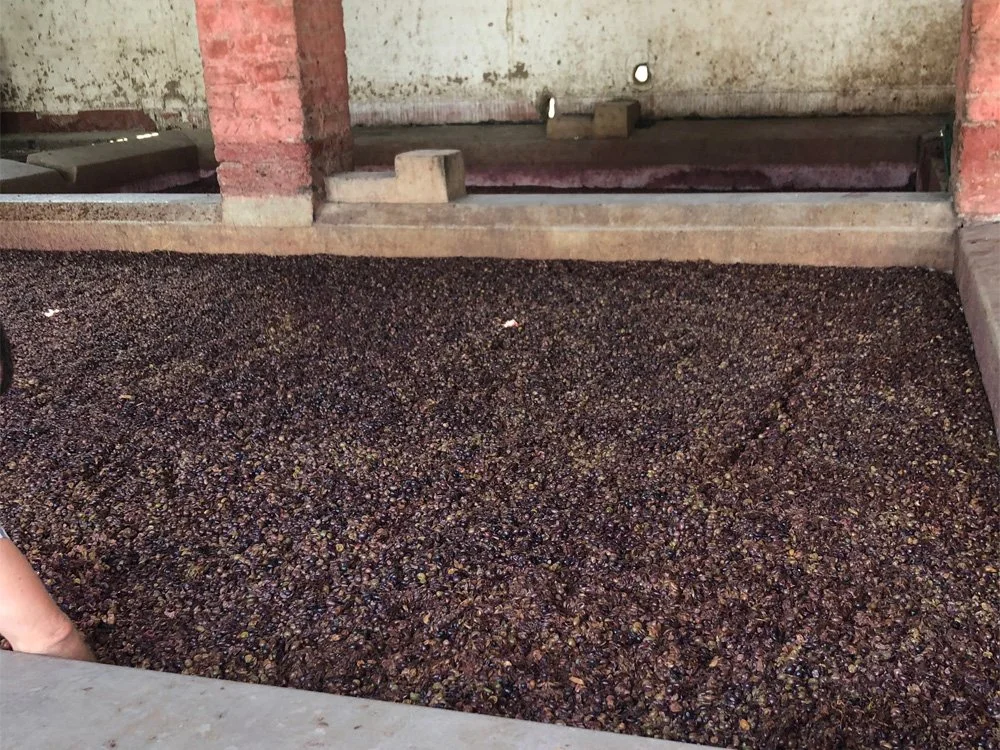Our Pisco
Hand harvested single estate grapes, gently pressed a single time, naturally fermented into wine, Copper Pot distilled once to proof by varietal, rested & blended according to family tradition. Capurro Pisco is made 100% of grapes, undiluted, unfiltered, and with no additives of any kind at any step of the production process.
A pure expression of our terroir.
REGION: Nasca, Ica, Perú
ELEVATION: 428 meters
MICROCLIMATE: Coastal desert
TRELLIS SYSTEM: Canopy
SOIL: Alluvial soil, silt, clay, limestone, sand
HARVEST: By hand, small baskets
PRESS: Single press, pomace discarded
FERMENTATION: Natural, indigenous yeast
DISTILLATION: Copper Pot, single distillation to proof
RESTING: Each vintage is rested a minimum of 1 year before bottling
Available Varietals by Vintage
-

Acholado
The perfect balance of aromatics and texture, we blend multiple grape varietals to make our family flagship, the recipe is a secret.
-

Moscatel
Tasting Notes: Roses, orange blossom, cardamom, red apple skin, bartlett pear
-

Quebranta
Tasting Notes: Ripe banana, hay, tea leafs, carrots, marzipan
-

Torontel
Tasting Notes: Herbal, jasmine flower, cucumber, candied fennel
Our Production Process
Cultural Farming
Living and farming with the earth and its movements, as opposed to using a purely scientific, nutrient-based approach, is how we have always approached agriculture. We are farmers first, not scientists, and employ organic, sustainable and biodynamic practices; no pesticides or chemicals are ever used in our agriculture.
Why this matters: Pesticides are used in industrial farming to kill pests - but pesticides also kill the natural yeast on the grape, seen on the grape as a fine powder/dust. For this reason, the use of pesticides will always affect fermentation.
Harvest
We harvest once per year when the grape sugar level is between 22-25 brix and never use any machinery on the vineyard. Hand harvesting allows us to use the human eye to discern quality. Birds and bees can pick at the grape and siphon the juice, leaving behind the skin and pulp which can start to ferment on the vine or turn to vinegar. Introducing that into our wine production would throw off the wine which would then give a harsh and bitter finish to the distillate.
Why this matters: Grapes at a lower brix level tend to be less expensive than average market price, lowering production costs. By starting with a lower brix, a chain reaction takes place requiring interventions to reach a final distillate with sufficient ABV. The larger the production facility, the more they tend to rush the process of production by starting with a lower brix and making quality sacrifices at each of the next steps.
Maceration & Press
After de-stemming, we macerate only the best berries for 12-24 hours. Maceration allows for extraction of Phenols, several hundred chemical compounds that affect the taste, color and mouthfeel of the final product. Post-maceration, we press the grapes gently a single time, avoiding excess tannins from the grape skins that could produce a pisco reminiscent of bad grappa or fire water.
Why this matters: Double and Triple pressing violate denomination or origin but are regular practices. Double extracts 30-40% more juice, thus reducing cost per liter. In triple, the grapes are pressed aggressively, then water and sugar are added, let sit for a couple hours, and pressed again. The result, even when blended with single press juice, is a muting of flavors and aromas with a bitter finish in the distillate.
Fermentation
After the press, we keep just the juice, letting the juice sit in open air tanks and allowing natural fermentation to take place. We are making a natural wine. We do not inoculate, we do not jump start the fermentation with anything (added yeasts, etc.), we just let the juice sit for indigenous yeast to complete the fermentation, which usually takes about 2 weeks but can take up to 30 days.
Why this matters: Adding yeast is an intervention often used if the grape brix was low, pesticides were used in agriculture, or production needs to be sped up. Aromatics, texture, and nuance are lost in the distillate.
Distillation
The wine is distilled in a direct fire heated copper pot still once to proof, discarding head and tail and being very conservative with the heart. The heart is where the true essence of pisco lies; all the aromatics and texture.
Why this matters: If we were to bottle head and tail, we could expand production but severely compromise the heart of the distillate. A pisco with a lot of ethanol on the nose and aromatics that are difficult to decipher it is likely to have been made cuts using a large portion of the head of the distillate. A pisco with great aromatics but falls flat on the palate with a short finish and no complexity is likely to have made cuts using a large portion of the tail of the distillate.
Resting & Bottling
A long resting period gives the spirit time to mature and marinate. At the denomination mandated three month mark, the spirit is still raw. We do not release anything less than one year old, and when we release a vintage, it is based solely on taste. When ready, Capurro is bottled at distillation proof with no water added.
Why this matters: Almost every other pisco is released three months after distillation as the denomination of origin law mandates as a minimum. Most spirits in general are rectified with water to reduce proof prior to bottling. Pisco does not need to be because a high wine proof enables the spirit to reach over 40% ABV in one distillation.






